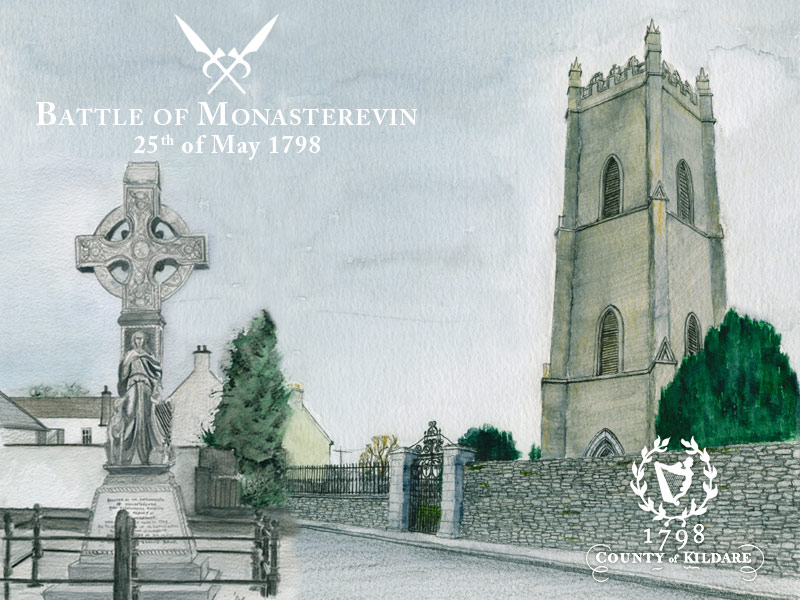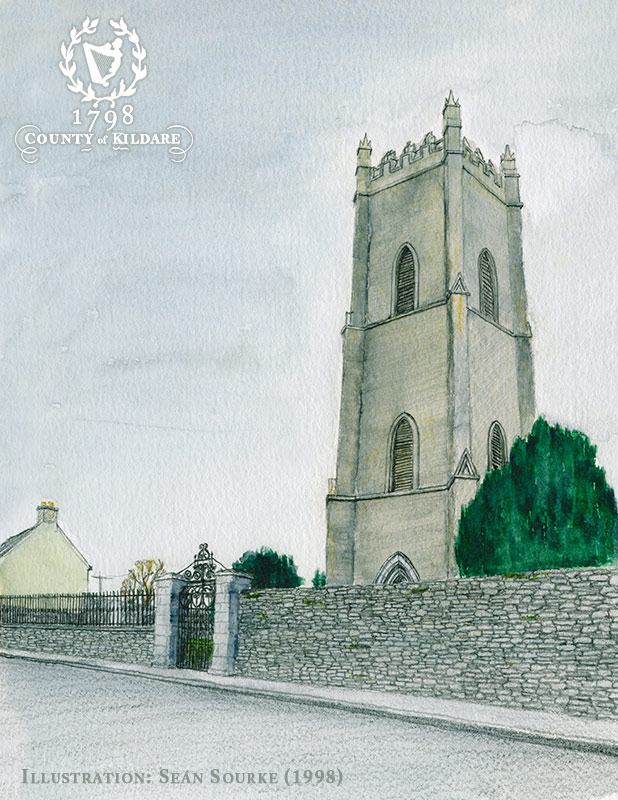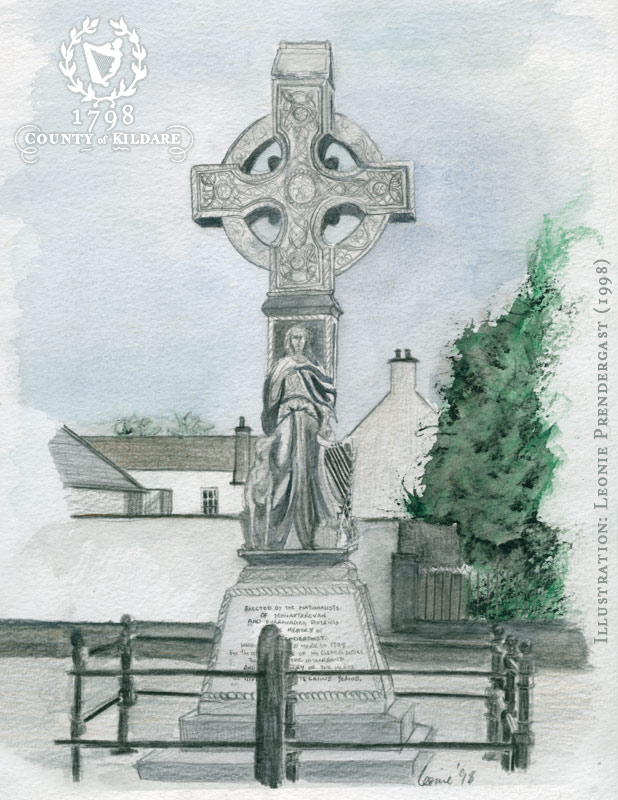Rebellion Towns & Villages

Monasterevin
Between 4 a.m. and 5 a.m. on the 25th of May, roughly 1,300 rebels under Captain Padraig O’Beirne from Nurney attacked the town. The rebels from Kildare, Nurney, Kildoon, Riverstown and Kildangan were opposed by 80 men (of whom 14 were catholic) comprising of a corps of yeoman cavalry under Captain Frederick Hoystead, and yeoman infantry under Lieutenant Bagot. Captain Winter and his small force of Suffolk Fencibles and 9th Dragoons had been ordered to retreat by General Wilford on the 24th of May.
The rebels attacked in three columns – one group by the canal, one by the turnpike, and one down the main street. After some serious fighting in the streets, the rebels fled but lost 63 of their men. Five yeomen were killed and 4 were wounded during the battle. Many rebels went on to Queens county; some returned home and no doubt some joined the camps soon established at Barnhill and the Gibbet Rath on the Curragh.

On May 29th, General Sir James Duff arrived in Monasterevin, where he augmented his forces before marching on to Kildare and the Gibbet Rath. Duff was garrisoned in Monasterevin for a period, during which time Father Edward Prendergast was executed on 11th of June for complicity with the rebels, having attended them at their camp at Barnhill.
The night he was executed, his body was placed under guard but was removed from Monasterevin by Padraig O’Beirne and a group of rebels and interred in Harristown cemetery where it remains to this day.

Rebellion Towns & Villages
Naas | Ballymore | Old Kilcullen | Knockaulin | Narraghmore | Ballitore | Athy | Monasterevin | Kildare Town | Rathangan | Gibbet Rath | Clane | Prosperous | Timahoe | Ovidstown | Surrender
